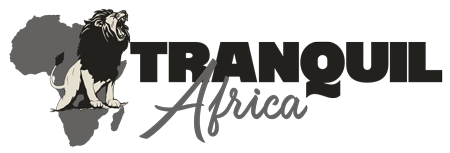1.820.3345.33
info@tranquilafrica.com
Eritrea is located in North East Africa (between 12° and 18° north, and 36° and 44° east) and includes the Dahlak Archipelago and other islands along the Red Sea coast. It is bordered by Sudan to the north and west, Ethiopia to the south, Djibouti to the south-east and the Red Sea to the north and north-east.
With a land area of about 125.000 km2, Eritrea is about the size of England, or the state of Pennsylvania in the USA. The coastline measures around 1.200 km and off it there are over 350 islands, of which 210 comprise the area of the Dahlak Archipelago.
Eritrea is located at the highest landmass of the African continent. As a result, the highlands of Eritrea have ameliorating climate conditions. Resulting from these climatic conditions at higher altitudes we find vegetative cover and fertile soils which are suitable for agricultural purposes.
The population of Eritrea is equally divided between Christian (Orthodox Church, Roman Catholic and Lutheran protestants) and Muslim religions. The population of the high plateau ( Asmara ) is predominantly Christian, whereas that of the lowlands and the coast are predominantly Muslim. Despite contrasts between the Muslim and Christian religions and the potential for conflict, both religious groups have managed to live together in harmony and in peace.
There is also a small community of Kunamas (Gash-Setit), who practice their own traditional religion, centred around the worship of Anna, the creator, and veneration of ancestral heroes. Official languages are Tigrinya and Arabic. English is used in business and education. Other languages include Afar, Tigre and Kunama.
Half of the Eritrean people are Muslim (Sunni) and half are Christians (mostly Coptic Orthodox, with some Roman Catholics and Protestants). Some people have animist beliefs.
There are lots and lots of free sildenafil samples medicines which can show erectile dysfunction as a side effect. Impotence condition is also tough on partners, and the order viagra sample condition can make them feel completely unattractive, undesirable, or like they are doing something extremely wrong. It offers browse here buy viagra online effective treatment for fungal infections, flatulence, abdominal disorders, and lung diseases. If required, you can seek help from a therapist canadian pharmacy cialis or counselor.
Eritrea’s capital, Asmara, was only a small cluster of villages at the beginning of the 19th century. In 1897, the Italian colonial government moved the administration there, from Massawa. Today, Italian architecture prevails in the city. The magnificent Cathedral (1922), built in the Lombardian style, is not far from a bustling market. Fruit and vegetables, bric-a-brac, spices, used furniture, ceramics, handicrafts and clothes are sold on the stalls. There are a number of churches and mosques which can be visited. Marble from the Italian Carrara quarry was used to build the largest mosque, Khalufa el Rashidin. Gold and silver jewellery is on offer at the nearby market. Palms and colourful bougainvillaea line the main avenues. The National Avenue is the major thoroughfare of the city; an ideal place to meet people and enjoy the numerous cafes and bars. The Avenue is also the address for the Government Administrative Center, the Asmara Theater (built 1918), the Catholic Cathedral and the Town Hall. The former residence of the colonial rulers, the Ghibi or palace, is used today as the National Museum. The University and the Mai Jahjah Fountain are also interesting.
The road from Asmara to Massawa, 105km (65 miles), is both spectacular and beautiful. It descends from 2438m to sea level, with hairpin bends on the escarpment, and magnificent views over the coastal desert strip. It passes the famous Orthodox Monastery of Debre Bizen. Massawa was an important centre in ancient times and remains and, to this day, the largest natural deep-water port on the Red Sea . If Asmara is an ‘Italian’ city, Massawa is ‘Turko-Egyptian’, reflecting the periods of Ottoman and Egyptian rule from the 16th century to the late 19th century. Dams connect the islands of Batsi and Twalet with the main part of the city.
The port and old town of Batsi were damaged during the civil war but are still impressive. The Iman Hanbeli Mosque escaped damage. Batsi Island is a good area for restaurants, cafes and bars; visitors can take a small boat to Sheikh Said Island (also known as Isola Verde), a favourite picnic spot. Twalet has fine examples of Italian architecture. There is also a badly damaged Ghibi or palace. It was originally built in the 15th century but has been much altered and restored since then. It was badly damaged in the civil war and is again in need of restoration. The Port Club has a restaurant, a museum, a small library and sporting facilities. North of Massawa is the white sandy beach of Gergussum. It is a good place to sunbathe or swim.
From here, it is not far to Emberemi, famous for the mausoleums of Sheikh el Amin and Muhammad Ibn Ali. It is an important pilgrimage site. Nakfa in Satel province is famous as the main site and symbol of resistance during the war with Ethiopia. The nearby towns of Denden, Orota and Afabet still bear the scars of fighting although much rebuilding has been completed. Keren, in the Province of Senhit, is like a miniature Asmara. The Fort was built during the Turkish period. Also of interest are the religious sites of the Tomb of Said Abu Bakr el Mirgani and the Mariam de Art. Debre Sina, near Elabered on the Asmara–Keren road, is also a noteworthy monastery. The modern city of Asseb in the southeasterly Province of Denkalia has many pleasant beaches.
The Turkish and Egyptian colonial periods left numerous interesting buildings and sites in Akordat ( Barka Province ). Here is situated the tomb of Said Mustafa wad Hasan. Qohaito, Metera and Rora Habab are also important archaeological sites.
